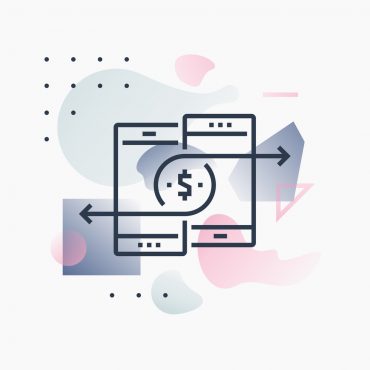
More companies are adopting AI-driven analytics tools that cut through the clutter of business data and offer a better view into behaviors that are truly driving sales.
Gartner’s CEO Survey showed that “almost 80% of CEOs recognize they must change their business models significantly over the next three years.” In a shifting business environment, evolving customer demands and preferences, new technologies, and an abundance of data are all feeding into the need – and the ability – to change how we do business. Never has this been so apparent as during the COVID-19 crisis. For example, some retailers quickly adjusted to the “new normal.” They were able to shift their business model to change marketing efforts and messages, adjust their supply chains, and meet changing demand on a weekly – or often daily – need. Others could not.
See also: Augmented Analytics Benefits and Use Cases
Most notable in Gartner’s report, and a key reason some retailers thrived during the pandemic, is the impact of data analysis and data insights, with Gartner claiming that “augmented analytics can significantly contribute to business model innovation.” But despite the acknowledgment that better insights offer a potential path to new models and revenue, Garter also states that “given their limited knowledge of this (augmented analytics) technology, CIOs are not fully prepared to leverage the technology to innovate their business models.”
For CEOs and CIOs trying to learn from best practices trialed during COVID-19 and sort through the complex landscape of data and analytics technology as part of a digital transformation strategy, there are a couple of best practices that you can follow as you get started.
Leverage Tools you Already Have
Augmented analytics is the use of machine learning (ML) and natural language processing (NLP) to enhance data analytics, data sharing, and business intelligence. This means that you can leverage the tools you already have in place to gather and store data such as customer data, digital and social channel data, POS data, inventory, and more. The next step is to layer on an augmented analytics tool, which is surprisingly easy.
For example, a large department store used an augmented analytics SaaS platform that was able to provide valuable insights on each of its marketing tactics (search performance, email campaigns, and more) to elevate any unexpected behaviors. Within a day, managers could see, and respond to, critical changes. This allowed the team to adjust marketing tactics and drive new revenue from aligning marketing to customer behavior.
Focus on the Data that Matters
Each business understands the behaviors that move the needle for their particular company, so being able to quickly see when these behaviors change or fall short of expectation can have a significant impact on the business in a positive or negative way.
Consumer businesses need to understand when a customer segment begins to buy products in a new way, indicating an emerging shift in behavior. In one case, augmented analytics were able to take over where traditional business intelligence (BI) tools ended. BI tools are great for tracking data that managers already know need to be tracked, like daily sales, but BI tools don’t alert managers to unknown or unexpected changes in that data. For example, by integrating eCommerce data with search data, a shoe retailer discovered an out-of-season jump in interest for sandals. Their augmented analytics platform flagged the change based on year-over-year “normal” data behaviors. Upon knowing this, the retailer adjusted their email marketing to focus on the product category in demand, resulting in a 30% sales increase for the company year-over-year.
In another scenario, a CPG company wanted to better understand the performance of warehouse employees across multiple teams and warehouses. Managers knew that improving the efficiency of the entire warehouse system could positively impact revenue.
This particular CPG company warehouse system has hundreds and sometimes thousands of employees receiving and shipping time-sensitive, perishable products. Many different warehouse teams work together to receive and ship products, which can make gathering data on task speed and personal performance an unrealistic task for warehouse floor managers.
By implementing automated business analysis tools, managers could see unexpected performance data on the amount of time it took to start a task and complete a task in a particular warehouse queue. The average work time expectation for this stage was significantly shorter than the findings and was impacting the speed of the entire task process.
By integrating SAP HANA data into its automated business analysis platform, this CPG brand also discovered positive queue activity by specific workers. This insight was valuable because managers could then identify employees and shifts tied to performance factors that were both meeting and falling short of expectation. The company then used this insight to optimize other queues within the warehouse through training and sharing of best practices, recognize productive workers, and drive overall output.
Give your Leadership Room to Explore
2019 saw a high number of C-level departures in businesses that rely on customer loyalty, partly due to an inability of leadership teams to respond to swift-changing customer purchase behaviors. We’re likely to see a similar trend during the remainder of 2020, especially given the pandemic and its impact on buying behavior for everything from technology to cars to food.
Aligning the marketing function has become critical to capture the attention and the spending power of buyers. And it is an even more important function now, as buying patterns, inventory, marketing effectiveness, and other business patterns shift in response to the pandemic. At the same time, leaders also need time to define who their buyers are, how buyers interact with the brand, and how technology can create an improved experience.
Applying augmented analytics is a great way to start getting your arms around your data. Rather than try to glean insights from outdated, historical BI dashboards, augmented analytics alerts managers to the areas of the business that are performing as expected, and those that are not. It can also offer root cause analysis to pinpoint the reason for significant data or behavior changes.
This allows leaders, analysts, and marketers to align programs, focus on the unexpected and modify the business approach immediately to take advantage of positive trends while adjusting to reduce the impact of behaviors that might delay or block opportunities for revenue. But it also requires managers to adapt their thinking when it comes to gathering, using and applying data.
Because augmented analytics can be deployed quickly and easily, it doesn’t put a strain on IT, analyst, or data scientist resources. In fact, it enables teams by giving them greater visibility into the parts of the business that need attention or can drive revenue. It supports data scientists already in place, so leaders can reassure data science teams that both augmenting toolsets and adapting mindsets are positive changes.
With so much at stake now and in the next 12 to 18 months as buyer behavior continues to evolve, more companies are adopting AI-driven analytics tools that cut through the clutter of business data and offer a better view into behaviors that are truly driving sales.





























